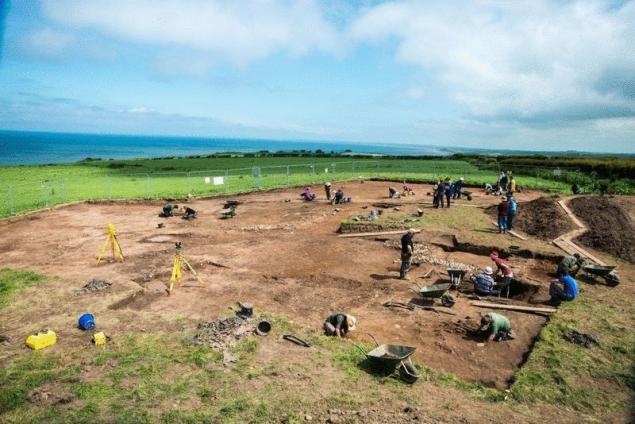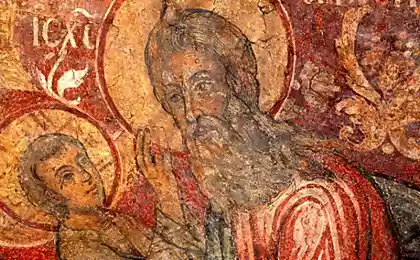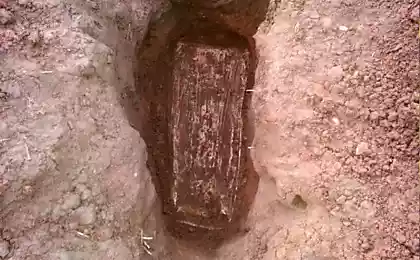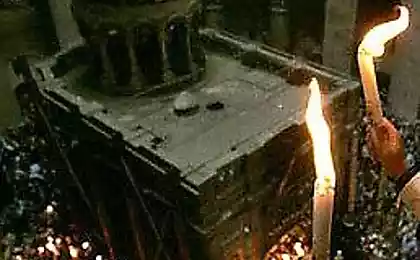411
In Maryport the British began excavations of a Roman temple
Archaeologists explore the mysterious ring structure, which may be a temple or a mausoleum.
A group of archaeologists, students and volunteers have resumed excavations at the settlement next to the Roman Fort at Maryport (Cumbria, North-West England). This year the researchers intend to examine the remains of a Roman temple and associated structures.

"This year we will study the Eastern boundary of the settlement to the North East of the Fort, where there was at least one temple. This structure excavated in the 1880s, last year we opened it again," said Professor Newcastle University Ian Haynes (Ian Haynes).
"Immediately beneath this building we found the ruined remains of the sheep and the bones of birds," said the Professor. According to him, the other monuments in Britain and in other countries, these remains indicate a ritual dedication or sacrifice.
In addition, the archaeologists found the remains of a "mysterious ring structure", which was not far from the square of the temple. "We are going to explore this site to see what it [the building] was constructed: perhaps it was another temple or a mausoleum," explained Ian Haines.

He hoped that the study of this area will shed light on the meaning and role of the stone altars of the Roman Fort Alauna Carvetiorum and their relationship to settlement, which is located on the site of the modern Maryport. "We want to know more about how and where they were originally located here in Roman times and how people lived in the Fort and settlement used rituals such as dedications and sacrifices," said the Professor.
Roman Fort at Maryport was built in the II century BC on the orders of Hadrian. It housed the headquarters of the command of a series of small fortresses and towers, which extended South from Hadrian's wall, along the West coast of Britain. A Fort and settlement at Maryport were important elements of the defense: they were on the North-West frontier of the Roman Empire for over 300 years.
Hadrian's wall – a fortification with a length of about 120 kilometers. It was built in 122-126 years BC the fortress was protected from the North the territory of Roman Britain from the raids of barbarian tribes.
Source: nkj.ru
A group of archaeologists, students and volunteers have resumed excavations at the settlement next to the Roman Fort at Maryport (Cumbria, North-West England). This year the researchers intend to examine the remains of a Roman temple and associated structures.

"This year we will study the Eastern boundary of the settlement to the North East of the Fort, where there was at least one temple. This structure excavated in the 1880s, last year we opened it again," said Professor Newcastle University Ian Haynes (Ian Haynes).
"Immediately beneath this building we found the ruined remains of the sheep and the bones of birds," said the Professor. According to him, the other monuments in Britain and in other countries, these remains indicate a ritual dedication or sacrifice.
In addition, the archaeologists found the remains of a "mysterious ring structure", which was not far from the square of the temple. "We are going to explore this site to see what it [the building] was constructed: perhaps it was another temple or a mausoleum," explained Ian Haines.

He hoped that the study of this area will shed light on the meaning and role of the stone altars of the Roman Fort Alauna Carvetiorum and their relationship to settlement, which is located on the site of the modern Maryport. "We want to know more about how and where they were originally located here in Roman times and how people lived in the Fort and settlement used rituals such as dedications and sacrifices," said the Professor.
Roman Fort at Maryport was built in the II century BC on the orders of Hadrian. It housed the headquarters of the command of a series of small fortresses and towers, which extended South from Hadrian's wall, along the West coast of Britain. A Fort and settlement at Maryport were important elements of the defense: they were on the North-West frontier of the Roman Empire for over 300 years.
Hadrian's wall – a fortification with a length of about 120 kilometers. It was built in 122-126 years BC the fortress was protected from the North the territory of Roman Britain from the raids of barbarian tribes.
Source: nkj.ru
Leaf-shaped turtle from Fort Wayne Children's Zoo
NASA creates a spaceship to fly to alpha Centauri +video























